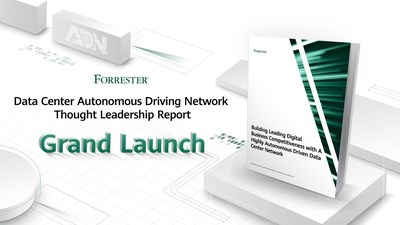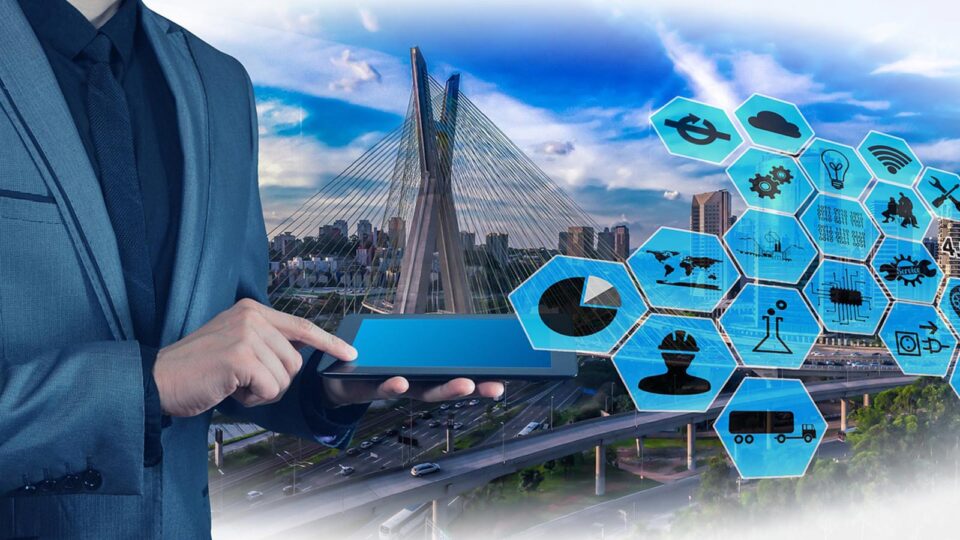During the Mobile World Congress (MWC) 2022, Huawei commissioned Forrester Consulting to conduct a study about the autonomous driving network thought leadership paper — “Building Leading Digital Business Competitiveness with A Highly Autonomous Driven Data Center Network (DCN)”. The paper discusses how enterprise data centers are transforming to modern cloud data centers represented by “multi-cloud and hybrid deployment”, while DCNs are shifting from Level 3 to Level 4. The paper urges automation growth, along with suggesting ways enterprise data center networks can evolve towards a higher level of autonomy.
Top iTechnology 5G Technology News: Mavenir and Qualcomm Accelerate Next Generation 5G Infrastructure with Expanded Portfolio of Open RAN Solutions

Forrester surveyed IT leaders and technical decision-makers of 197 large and midsize enterprises/organizations worldwide on the current status, challenges, and transformation goals of their data center networks.
New Technologies and Business Models Drive Data Center Networks Towards High Autonomy
According to the paper, 61.9% of enterprises are building data centers using private and hybrid clouds. Data centers deployed on the cloud provide enterprises with on-demand self-service, ubiquitous access, resource pooling, rapid elasticity, and measurable standard service capabilities. All this demands highly autonomous driving networks. At the same time, increasingly fierce market competition and fast business model innovation pose more stringent requirements on service continuity and real-time performance. These rising business demands also require more autonomy for fast network deployment and service provisioning, as well as to guarantee service continuity and prevent business interruptions.
Increasingly Complex Networks and Outdated Network Facilities and Technologies Are Key Challenges on the Way to Autonomous Driving Networks
After self-assessment, 64% of the surveyed enterprises believe that their data centers are in the L3 phase — conditional autonomous driving network. Technologies such as cloud computing, artificial intelligence, and SDN help data center networks improve automation and intelligent O&M. However, enterprises still face many challenges in automatic deployment and implementation. Especially, the construction and O&M phases still heavily rely on experts’ advice and employee skills, which is inefficient and error-prone.
In fact, most enterprises rely on vendors’ solutions (covering automated implementation plans, processes, and related tools) to achieve a certain degree of automation for the single-cloud and single-DC network. As enterprise data centers develop rapidly, multi-DC, multi-cloud, and heterogeneous networks are becoming the new norm, exponentially increasing network complexity. As a result, the existing solutions, tools, and skills cannot meet the requirements.
Data centers are not built in one go. 50.8% of the surveyed enterprises said that they still utilize many old networks and devices while expanding and building their data center infrastructure. However, traditional network architecture is not flexible and evolves slowly. As such, it’s hard to automate older networks. This signals another key issue — finding ways to rebuild outdated infrastructure and technologies to protect past investments.
Top iTechnology IOT News: Advancing IoT Open Standards, EMQ Becomes OASIS Open’s Newest Foundational Sponsor
Best Practices and Partnerships Can Accelerate Evolution
Forrester suggests that enterprises formulate clear data center network automation goals and evolution paths based on their current status and strategies. They can also learn from industry best practices. Network automation involves all aspects of technology — including network devices, hybrid cloud architecture, and automation — so it is difficult for enterprises to accomplish by themselves. The solution is to draw on the strengths of partners to accelerate automation, staying ahead of the competition.
Huawei CloudFabric 3.0 Comes Top in L3.5 Autonomous Driving Data Center Networks
Recently, Tolly Group — a global provider of testing and third-party validation and certification services — compared Huawei CloudFabric 3.0 Hyper-Converged Data Center Network Solution and a mainstream data center SDN solution. The report rated Huawei’s solution with 3.51 points — far higher than the 2.8 points received by the mainstream solution. It is also the only L3.5 data center autonomous driving network solution that has been verified by Tolly.
Huawei CloudFabric 3.0 Hyper-Converged Data Center Network Solution provides full-lifecycle automation and intelligent O&M capabilities for data center networks. It draws on several innovative technologies, such as the open programmability framework, service orchestration platform, digital twin, and knowledge graph. These allow Huawei CloudFabric 3.0 to centrally manage multi-DC, multi-cloud, heterogeneous networks, provision services in seconds, perform simulation and verification, as well as locate faults between applications and networks. The solution facilitates agile service innovation and enables real-time service provisioning. Huawei CloudFabric 3.0 has been widely used across industries such as finance, government, large enterprises, and carriers, accelerating enterprises’ digital transformation and helping customers achieve business success.
Top iTechnology Cloud News: Absolute Software Completes SOC 2 Type 1 Certification for NetMotion Platform
[To share your insights with us, please write to sghosh@martechseries.com]


